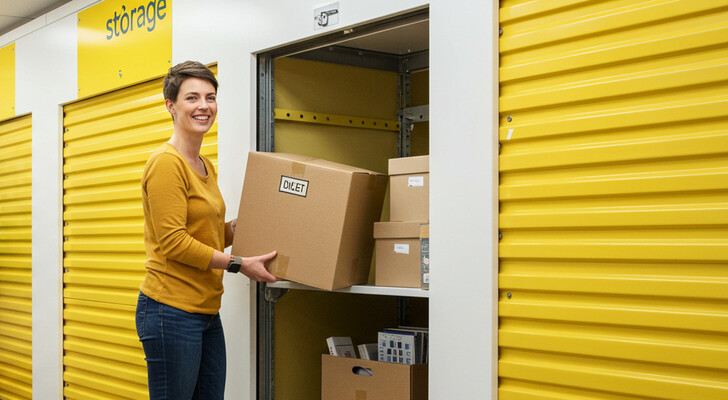
Self-storage has become a practical solution for millions of Americans looking to manage their belongings. With housing costs climbing, living spaces getting smaller, and lifestyles becoming more mobile, the need for extra space is higher than ever. Storage units give people a safe and convenient way to keep items close by without overcrowding their homes. Whether you’re downsizing, relocating, running a business, or simply organizing your household, self-storage can be a cost-effective way to stay clutter-free.
The Rise of Self-Storage in the U.S.
What was once considered a niche service has grown into a major industry. According to the Self Storage Association, more than 10% of households in the U.S. rent storage units. That represents over 30 million people, and the number continues to increase. The appeal lies in how easy the process has become. Facilities commonly offer online reservations, flexible month-to-month agreements, and secure 24/7 access. For most renters, all that is required is an ID and a payment method, with no long-term obligations.
How Storage Units Work
Renting a storage unit is straightforward. First, you select a facility based on location, unit size, and features such as climate control or drive-up access. Reservations are usually available online or by phone, and once booked, renters receive a gate code or key for entry. You provide your own lock or purchase one on-site, and you are the only person with access to your unit. Security measures such as cameras, gated entry, and staff supervision are standard in most facilities.
Units can be accessed during business hours or around the clock, depending on the facility. Payments are generally due monthly, and with flexible contracts, renters can cancel when the space is no longer needed.
Short-Term vs. Long-Term Storage
Self-storage rentals generally fall into two categories:
Short-Term Storage: Ideal for temporary needs, such as moving between homes, storing furniture during remodeling, or keeping college items over summer break. These rentals often last a few weeks to a few months and are paid month to month.
Long-Term Storage: Best for extended needs of six months or more. Retirees downsizing, military personnel on deployment, or small businesses with extra inventory often choose this option. Some facilities may provide discounted rates for longer commitments or advance payments.
Cost of Storage and How to Save
The cost of storage depends on location, unit size, and additional features. On average:
A 5×5 unit costs around $35 to $65 per month.
A 10×10 unit ranges from $90 to $150 per month.
Units in smaller towns and rural areas are typically more affordable, while climate-controlled or centrally located facilities may charge higher rates.
To find the best deals, consider comparing listings on platforms like SpareFoot, Public Storage, Extra Space Storage, or U-Haul. Many facilities advertise discounts for first-time renters, such as the first month free or reduced introductory rates. Choosing a location slightly outside a major city can also lower costs significantly.
Why Self-Storage Remains Popular
Today, self-storage is used by a wide range of people: families storing seasonal items, retirees downsizing, students keeping belongings between semesters, and small business owners managing inventory. For many, storage units act as an extension of the home or office, providing flexibility and peace of mind.
With urban living spaces shrinking and life transitions becoming more frequent, self-storage offers a practical and secure way to keep belongings safe without sacrificing comfort at home. Whether for a short move or a long-term solution, renting extra space has become an essential part of modern living.


